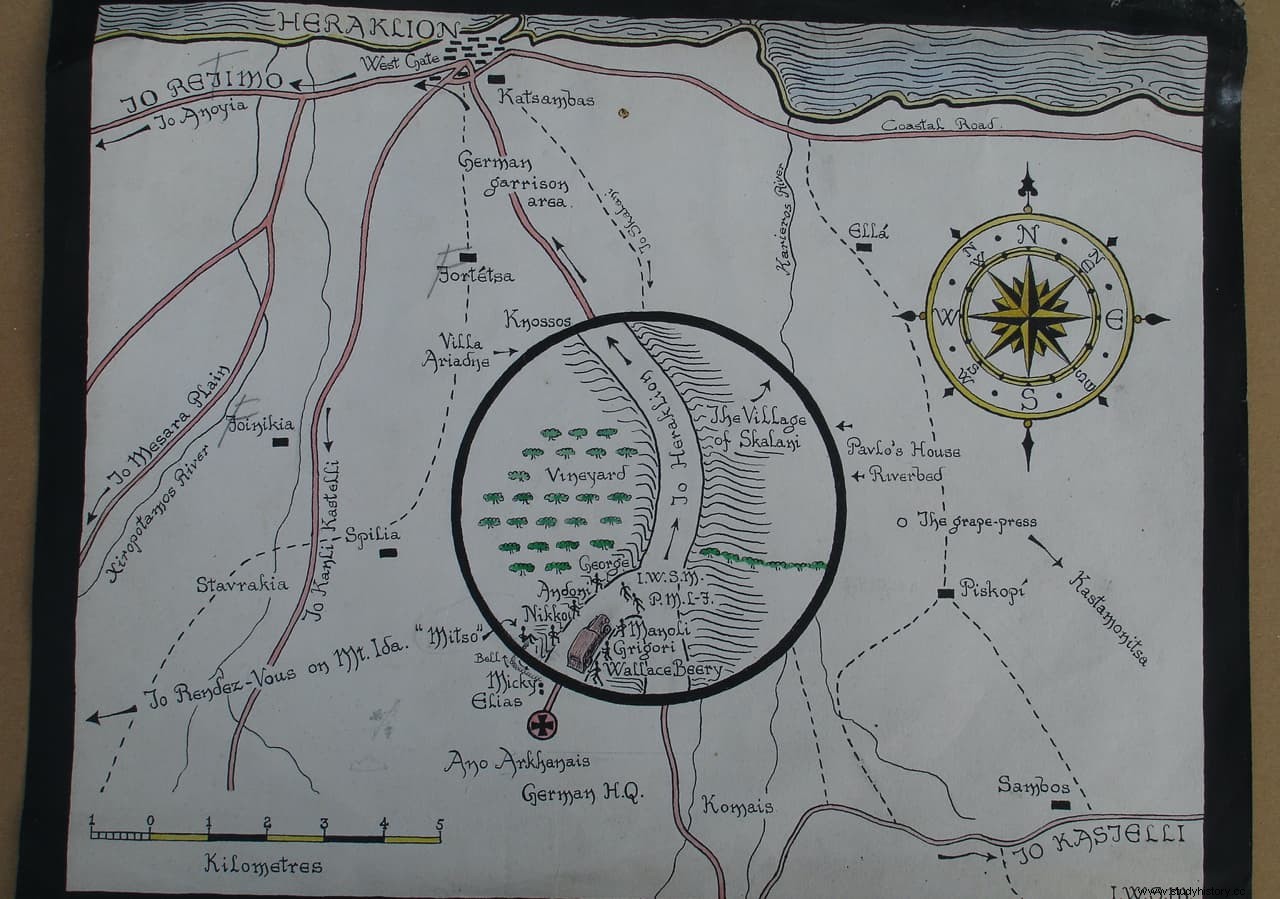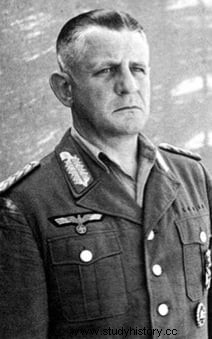Following the Nazi invasion of Crete in May 1941, British and other Commonwealth forces that had been involved in the defense were evacuated to Egypt and other Allied-controlled territories.
But at the same time that the evacuation was taking place, the Special Operations Directorate (SOE) introduced several agents to the island with instructions to support and assist the Cretan resistance movements in their operations against the invader.
One of those operations, devised from Egypt by Major Patrick Leigh Fermor (later to become Britain's most famous travel writer) and Captain William Stanley Moss , consisted of the kidnapping of General Kreipe , commander of the German 22nd Airborne Infantry Division in Crete.

Fermor had previously successfully carried out missions on the island, where he lived in hiding for more than two years during the war. After the armistice between Italy and the allies on September 3, 1943, he had managed to help Italian General Carta, commander of the Siena Division who controlled eastern Crete, to escape from the Germans along with some of his officers, and bring them to safety in Egypt.
Encouraged by his previous successes, Fermor decided to present to his superiors the idea of kidnapping General Müller, commander of the 22nd Panzer Grenadier Division based at Heraklion. To his surprise, the plan was accepted.

On February 4, 1944, together with Cretan SOE agents Georgios Tyrakis and Emmanouil Paterakis, they left Bari, at that time the headquarters of the Eighth Army, with orders to parachute onto the island. At the agreed point, only Leigh Fermor managed to jump. Due to bad weather conditions the other three had to return.
Fermor patiently waited hidden by the resistance for two months, until the rest of the team had a chance to reach the island, this time by sea. On April 4, using an ML842 speedboat, they managed to reach the Cretan coast, where Fermor and another SOE agent, Sandy Rendel, were waiting for them.
By then the original plan, which was to kidnap General Müller, the military governor of Crete, was no longer viable because he had been dismissed. But they decided to go ahead by changing the target to his replacement, General Kreiper.
With the inclusion in the team of new members of the resistance, preparations began. Fermor, dressed as a local peasant and under the assumed name of Mihali Phrangidakis, made several bus trips to Heraklion and the area surrounding the Nazi headquarters to reconnoitre the terrain, concluding that it was virtually impenetrable.
After several days monitoring the general's movements, he opted for kidnapping. The plan was for two SOE agents disguised as German military policemen to stop the general's vehicle on his way home.

They carried it out on April 26. Once the general's vehicle had been stopped and the driver neutralized (he would later be found dead), they fled with Fermor disguised as the general himself, while the real one hid in the back seat with Paterakis and two other members of the resistance. . Moss would drive the vehicle in this guise through an amazing 22 roadblocks.
At the time of leaving the vehicle, Moss took it upon himself to leave intelligence documents in it that proved that the kidnapping had been committed by British commandos, so that no reprisals were taken against the local population. In addition, the BBC had promised to broadcast the news, and the RAF would spread leaflets all over Crete announcing the hijacking once they were safely in the mountains.
The group entered the mountains heading south, pursued by German patrols. Passing near Mount Ida, the mythological birthplace of Zeus, Kreipe stopped and recited a passage from Horace:Vides ut alta stet nive candidum Soracte (Look how Mount Soracte stands white covered in snow ), to which Fermor responded by reciting the rest of the poem. We had both drunk from the same fountains of knowledge I would later write Fermor.
Finally the group was collected on the beach of Peristeres on May 14, 1944 and transported to Egypt.
After the war it became known, through the testimony of some German soldiers, that Kreipe was not liked by his subordinates. One of the things that infuriated them the most was that he refused to stop his vehicle in contravention of his own orders that everyone should be searched. That explains why no one dared to stop the car at any of the 22 controls drawn by the commando in fleeing from him.
Once in Egypt, British intelligence took pains to make the Nazis believe that Kreipe had not been kidnapped but that he had voluntarily defected. After being interrogated in Egypt, Kreipe was transferred first to a prisoner-of-war camp in Canada, and later to a special camp in Wales. He was released in 1947. In 1972 a Greek television program (see video below) reunited the general with his kidnappers. He died in Northeim, Germany, on June 14, 1976 at the age of 81.
Moss told the story in his book Ill Met by Moonlight, which would become the basis for the 1957 film Ambush by Night starring Dirk Bogarde (playing the role of Leigh Fermor). In 2014 Fermor's own version, Abducting a General, would be published, of which Longreads recently published an extensive extract.
